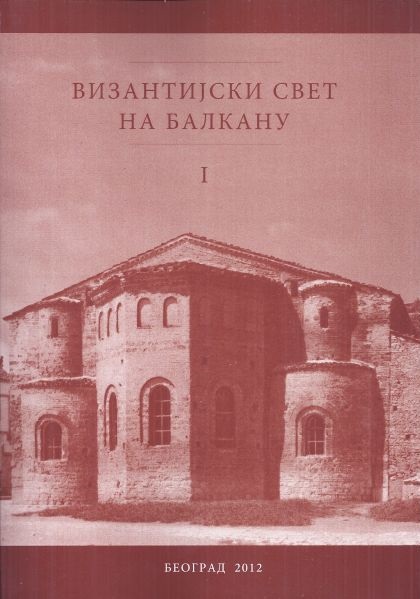Печат цара Алексија I из тврђаве Рас
The Seal of the Emperor Alexios I from the Fortress of Ras
Author(s): Vujadin Ivanišević
Subject(s): Archaeology, Social history, 6th to 12th Centuries
Published by: Vizantološki institut SANU
Summary/Abstract: During 2010, on the eastern slope of the fortress of Ras, a lead seal of the emperor Alexios I Komnenos was discovered beneath the stone fort. The obverse of the seal bears image of a bearded Christ, facing forwards and seated on a throne with a high back. Around the head of Christ is a nimbus. He wears a tunic and a colobion, and is giving a blessing with his right hand, while in his left, he holds the Gospel. The feet of Christ are resting on a circular pedestal. The inscription is not preserved but according to analogies with identical seals, it is certain that it contained the abbreviation IC — XC. The reverse shows the image of the emperor Alexios I facing forwards, standing on a pedestal. The emperor has a beard, is wearing a crown with prependoulia and is dressed in a divetesion, a maniakon and a loros, which is draped over his left shoulder. In his right hand he holds a labarum, which rests on the ground, and in his left hand holds a globus cruciger. One can distinguish only some of the letters in the inscription which formed a frame around the presentation. In the process of being pressed, the lead blank was not well-positioned in relation to the boulloterion, so that the imprint of the obverse and reverse were shifted in relation to the lead blank. The upper parts of the images, the head of Christ on the obverse and the upper part of the emperor's head on the reverse, are missing. Apart from that, the blank was narrower than the boulloterion itself, so that the inscriptions in the field on the obverse and along the rim of the reverse were not clearly imprinted. The seal itself has a diameter of 30 mm and weighs 20.5 g. Despite the fact that the inscription is poorly preserved and practically illegible, the identification of the seal does not present a particular problem. Based on the iconographic and stylistic features, it can be attributed to the emperor Alexios I Komnenos, whose seals are distinguished by a specific iconographic scheme with the presentation of Christ enthroned on the obverse and the standing figure of the ruler, facing forwards, who is holding a labarum and a globus cruciger on the reverse. According to the classification of the seals, proposed by G. Zacos and A. Veglery, in their corpus “Byzantine Lead Seals” our specimen would belong to the first variant of lead seals, subcategory two — n¿ 102b. For the consideration of our find, certainly the most important discovery in the area of Sirmium, Ma~vanska Mitrovica, to be more exact, is the seal of the sebastos and megas domestikos Alexios Komnenos, the future emperor, which Bo`idar Ferjan~i} dated to between the end of 1078 / beginning of 1079 and the month of March in 1081. This find, according to B. Ferjan~i}, represents an important testimony about the duration of Byzantine rule during the seventies and the beginning of the eighties of the 11th century. The discovery of the seal of the emperor Alexios I Komnenos in the fortress of Ras indicates the presence of Byzantine rule in this important stronghold in the region that bears the same name, and the find itself belongs to the time of the Byzantine take-over of the castle and the construction of the first fortification with an earthen palissade. The seal of the emperor Alexios I Komnenos points to the importance of fortifying the exposed Byzantine strongholds that were under constant threat from the Serbs, and his care for the Empire's western border. The importance which that border had for Byzantium is clearly testified in the reports by Anna Komnenos about the fact that the emperor Alexios visited the mountain passes between Dalmatia and Byzantium — at the border facing Serbia. He personally dealt with the fortification by constructing valli: trenches, palisades, observation towers, and wooden towers, as well as the construction of forts — towers made of brick and stone. Part of the policy of the emperor Alexios I was certainly the fortification of large military strongholds for the purpose of defending the Byzantine borders.
Book: Византијски свет на Балкану I-II
- Page Range: 57-68
- Page Count: 12
- Publication Year: 2012
- Language: Serbian
- Content File-PDF

